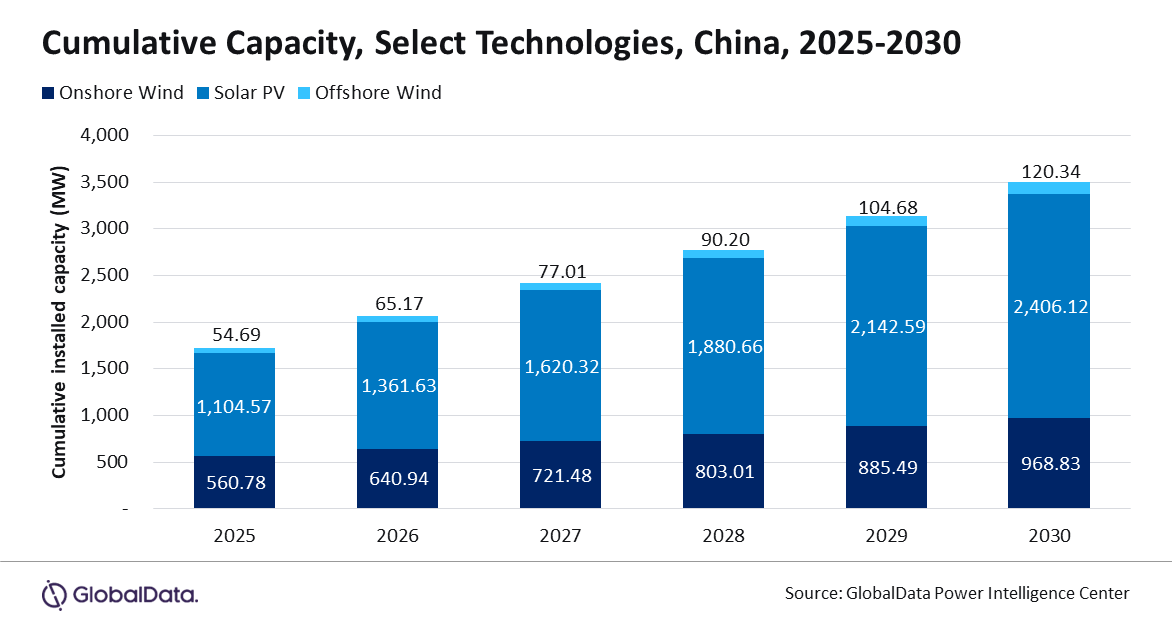
China’s solar photovoltaic (PV) capacity reached 609.5 GW in 2023, while its onshore and offshore wind capacity stood at 408.1 GW and 37.7 GW, respectively. The country is on track to surpass its 2030 target by a significant margin, achieving this milestone five years ahead of schedule in 2025. By that year, it is anticipated that the cumulative capacity of solar PV, onshore wind, and offshore wind will reach 1,104.6 GW, 560.8 GW, and 54.7 GW, respectively. This will result in a total of 1,720 GW of solar PV and wind capacity, thereby exceeding the initial 1,200 GW target set for 2030, says GlobalData, a leading data and analytics company.
GlobalData’s latest report, “China Power Market Size, Trends, Regulations, Competitive Landscape and Forecast, 2024-2035” reveals that solar PV power is expected to maintain its status as the dominant source of renewable power until 2035. Financial incentives and policy support are among the primary drivers that facilitate the achievement of targets ahead of schedule.

Sudeshna Sarmah, Power Analyst at GlobalData, comments: “Despite considerable advancements in renewable capacity development, China continues to depend heavily on thermal power. The nation's substantial reliance on coal-based power generation presents two primary challenges. First, pollution from coal-based generation has contributed to making China's cities some of the most polluted globally. Second, domestic coal production is declining, even as the demand for power increases. A significant demand-supply shortfall may emerge if China cannot maintain coal imports from Indonesia, potentially compromising energy security.”
The government is endeavoring to address this challenge by concentrating on renewable energy generation. Nevertheless, the principal obstacle is the insufficient grid infrastructure; numerous renewable energy projects have been deferred due to inadequate offtake capacity. The development of new transmission lines and a comprehensive smart grid network, capable of reconciling the variable nature of renewable energy supply with consumer demand, is crucial. However, this necessitates significant investment.
Sarmah adds: “In 2023, solar PV power constituted 20.9% of the total installed capacity mix, while onshore and offshore wind accounted for 14% and 1.3%, respectively. By 2030, it is projected that solar PV will represent 41.8% of the country's total power capacity mix. Additionally, onshore and offshore wind are anticipated to hold shares of 16.8% and 2.1%, respectively.”
Sarmah concludes: “China’s power sector encountered a significant shortfall in 2012, which compelled the government to embark on a process to augment capacity. Consequently, this initiative has led to a situation where capacity expansion has surpassed consumption, raising the possibility of an oversupply and underutilized plant capacity.
“Transitioning to a decentralized approach may supplant the existing centralized planning process, fostering more nimble decision-making. It is imperative that the government give precedence to the development of grid infrastructure and the advancement of energy storage systems, with the objective of gradually diminishing its dependence on thermal power.”



